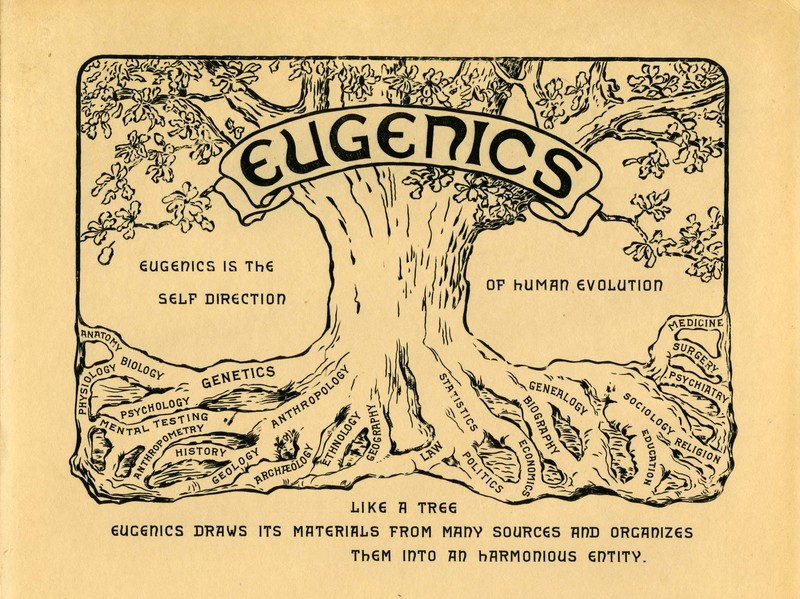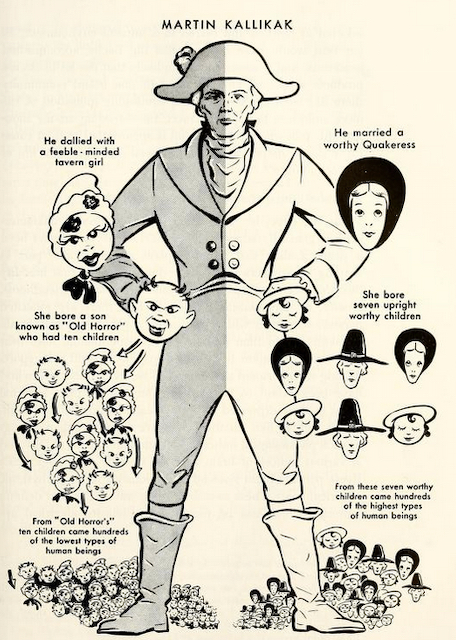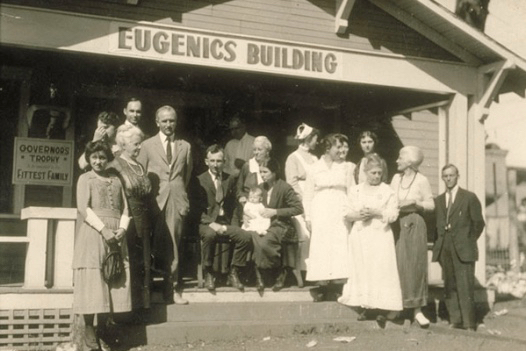Eugenics
Darwin’s work on the evolution of species and the application of Mendel’s experiments with pea plants (genetics) led to improving the quality of agricultural livestock and crops through controlled breeding. Eugenics (meaning “well-born”) was a philosophy that intended to similarly improve the quality of the human race by preventing individuals identified as “defective” from having children.
Sterilization legislation, which impacted individuals with disabilities and mental illness, as well as Indigenous populations, was directly linked to eugenics. It was also linked to immigration regulations that prevented individuals with perceived mental defects from entering the U.S. and Canada.
Prominent activists and leaders were associated with the eugenics movement, including Emily Murphy (women’s rights activist) and Nellie McClung (suffragist, legislator) who both supported the Sexual Sterilization Act in Alberta.
The desire to be “well-born” has had worldwide consequences and continues today.
As you explore the Eugenics timeline, reflect/journal on the following:
- What “good” was intended by eugenics?
- What are some negative consequences of these “good” intentions?
- What are some examples of how eugenics persists today?
-
19th Century
-
The institutionalization movement of the late 1800s coincided with the rise of eugenics. The term eugenics, meaning “well-born”, was coined by Sir Francis Galton in 1883. Eugenicists sought to improve the human species and preserve racial purity through planned human breeding.

-
20th Century
-
Henry H. Goddard was a psychologist who conducted research on intelligence and mental deficiency at the Vineland Training School for Feeble-Minded Boys and Girls in New Jersey. Goddard used intelligence tests developed by Alfred Binet and Theodore Simon to investigate intellectual disability in children. Binet and Simon categorized intellectual disability in terms of mental age:
- Idiot: someone with a mental age under two years
- Imbecile: someone with a mental age between three and seven years
Goddard coined the term “moron” to refer to an additional category of individuals assessed to have a mental age between eight and 12 years. Goddard believed that morons presented a danger to society due to their inability to mature beyond early adolescence. Goddard believed that individuals with intellectual disabilities should be institutionalized, with men and women in separate institutions. He believed that preventing people with disabilities from reproducing would eliminate intellectual disability and the social problems they presented.
-
In 1912, American psychologist Henry Herbert Goddard published a family study that became highly influential in the eugenics movement. The Kallikak Family: A Study in the Heredity of Feeble-Mindedness tried to show that intellectual disability was an inherited trait. While seriously flawed, the study attempted to establish a genetic link between disability and immorality, criminality, alcoholism, poverty, and prostitution. Goddard proposed segregation in institutions and sterilization to eliminate disability from future generations.

-
The eugenics movement had influence in many ways, including the sterilization of people with disabilities. Alberta was one of two provinces to enact sterilization laws, passing the Sexual Sterilization Act in 1928. The Act permitted the sterilization of individuals under the following circumstances:
- They were institutionalized
- They were admitted either under the Mental Diseases Act or the Mental Defectives Act
- They were recommended for release
- Consent was given by the individual
The Act was amended on two occasions: once in 1937 to remove the consent requirement and again in 1942 to include individuals who were not institutionalized.
Eugenics boards were created to manage the approval of sterilizations.
“The board is unanimously of opinion that the patient might safely be discharged if the danger of procreation with its attendant risk of multiplication of the evil by transmission of the disability to progeny were eliminated."
Wilson, R.A. (2018). The Eugenic Mind Project. Cambridge, MA: MIT Press, (p.66).
Eugenic Legislation in Alberta
Claudia Malacrida wrote the book A Special Hell: Institutional Life in Alberta’s Eugenics Years in 2015. Using the testimony of people who lived in the institutions as well as information from archives and former workers, Malacrida provides insight into the “special hell” that institutions were for the people living there and how eugenics guided this inhumane practice.
-
Following Alberta, British Columbia was the only other province to enact a sexual sterilization law. The B.C. Eugenics Board came into effect on July 1, 1933. The duties of the board were, like those in Alberta, to manage the approval of sterilizations.
“If discharged… without being subjected to an operation for sexual sterilization would be likely to beget or bear children who by reason of inheritance would have a tendency to serious mental disease or mental deficiency.”
Sexual Sterilization Act, 1933 (British Columbia)
Eugenic Legislation in British Columbia
